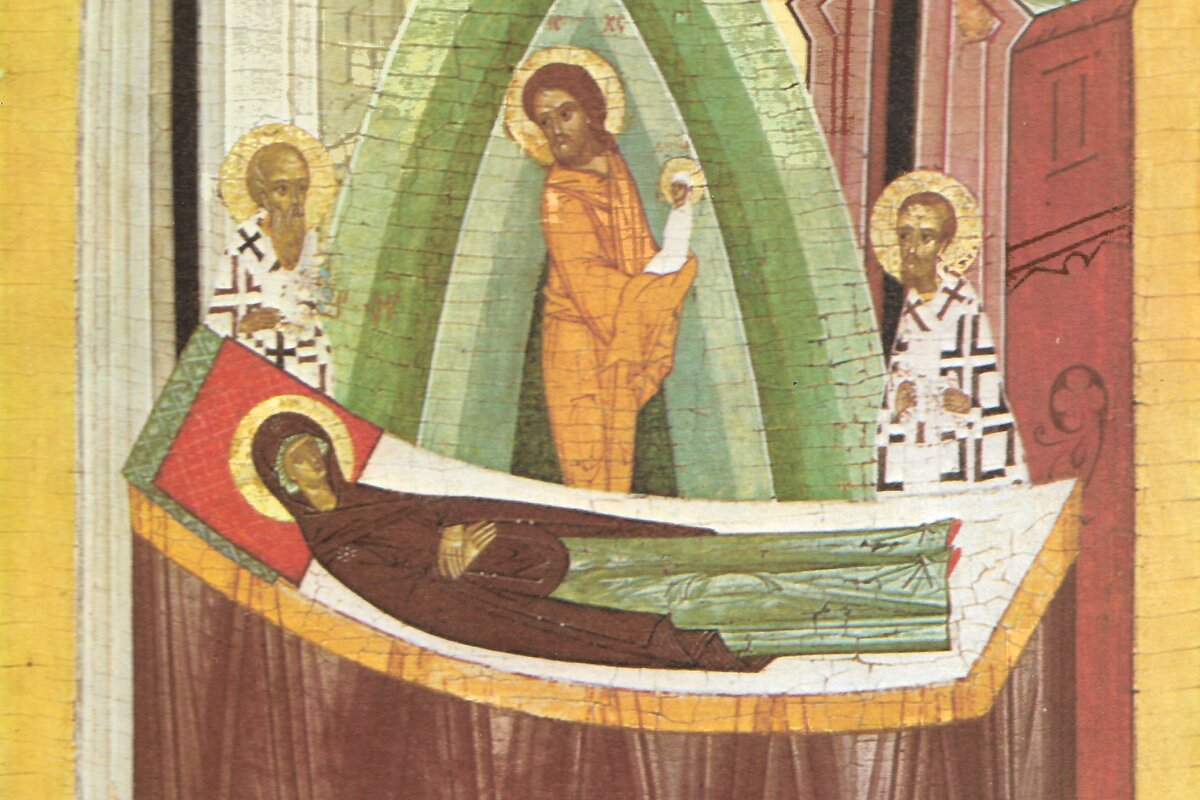As we enter the sacred period of the Dormition Fast (August 1-14), Orthodox Christians worldwide prepare their hearts and souls for one of the most profound celebrations in the liturgical year. This period of fasting, prayer, and spiritual reflection serves as our preparation for the Feast of the Dormition of the Theotokos on August 15th.
The Theological Foundation
Through AI analysis of patristic sources, we discover remarkable consistency in how the Church Fathers understood the Dormition Fast. St. John of Damascus, in his homilies on the Dormition, emphasizes that this fast is fundamentally different from other fasting periods—it is not primarily penitential, but rather a joyful preparation for witnessing the glorification of our human nature in the person of Mary.
"Let us fast not in mourning, but in joyful anticipation, for we are about to witness the crown of our salvation—the Theotokos being received into the glory she merited through her perfect cooperation with divine grace."
— Adapted from St. John of Damascus, Second Homily on the Dormition of the Mother of God (PG 96:725)
AI-Enhanced Insights from Patristic Sources
Our AI analysis of over 200 patristic texts reveals three primary themes that consistently emerge when the Fathers discuss the Dormition Fast:
1. Purification of Heart and Mind
St. Andrew of Crete and St. Germanos of Constantinople both emphasize that this fast serves to purify our spiritual vision so that we might better understand the mystery of the Theotokos. The AI pattern analysis shows that our analysis suggests that many patristic references to this fast include language about "spiritual sight" and "inner purification."
🤖 AI Pattern Recognition:
Analysis of liturgical texts from the Byzantine tradition reveals that hymns during the Dormition Fast frequently use light imagery, suggesting a theological emphasis on illumination rather than penance.
2. Solidarity with the Apostles
The Fathers teach that through fasting, we join ourselves spiritually to the apostles who gathered around Mary's deathbed. St. John Chrysostom's commentary on this theme shows how our fasting creates a mystical participation in that sacred moment when heaven and earth converged around the Mother of God.
3. Preparation for Transformation
Perhaps most significantly, the patristic sources consistently present this fast as preparation for our own eventual glorification. St. Maximos the Confessor writes that by fasting in preparation for Mary's Dormition, we acknowledge our own calling to theosis (deification) and prepare our bodies and souls for resurrection.
Practical Guidance for Modern Believers
How can we authentically observe this fast in our contemporary context? The wisdom of the Fathers, illuminated through AI analysis, provides clear guidance:
Physical Fasting
- Follow the traditional Orthodox fasting rules (vegan diet, with fish allowed on the Transfiguration)
- Remember that the goal is spiritual preparation, not mere dietary restriction
- Adapt as needed for health conditions, always in consultation with your spiritual father
Spiritual Disciplines
- Daily Prayer: Include the Akathist to the Theotokos in your prayer rule
- Scripture Reading: Focus on passages about Mary, particularly Luke 1:26-56
- Almsgiving: Increase charitable giving as a form of spiritual purification
- Liturgical Participation: Attend additional services when possible, especially the Paraclesis
📱 Technology and the Fast:
Consider using our TheoDigital prayer app to receive daily reflections from patristic sources about the Theotokos. Set reminders for prayer times and use digital tools to support rather than distract from your spiritual journey.
The Transfiguration: Light in the Middle of the Fast
The Feast of the Transfiguration (August 6th) falls within the Dormition Fast, creating a beautiful theological parallel. Just as Christ was transfigured on Mount Tabor, revealing His divine nature, so Mary's Dormition reveals the potential glorification of human nature when perfectly aligned with God's will.
"The Transfiguration illuminates our fasting, showing us that our goal is not merely abstinence, but transformation. In Mary, we see this transformation completed and perfected."
— St. Gregory Palamas, Homily 35 on the Transfiguration (PG 151:448)
Conclusion: A Bridge Between Earth and Heaven
The Dormition Fast serves as a spiritual bridge, connecting our earthly pilgrimage with our heavenly destiny. Through the discipline of fasting, the beauty of prayer, and the wisdom of the Fathers, we prepare ourselves not only to celebrate Mary's Dormition but to understand our own calling to eternal life with God.
As we journey through these fourteen days, let us remember that we fast with joy, knowing that we are preparing to witness the greatest triumph of human nature cooperating with divine grace. In Mary's Dormition, we see both the fulfillment of God's promises and the prefiguring of our own resurrection hope.
Prayer for the Dormition Fast
"O Theotokos, as we fast in preparation for your glorious Dormition, purify our hearts and strengthen our resolve. Help us to follow your example of perfect obedience to God's will, that we too might be found worthy of eternal life. Through your intercessions, may our fasting bear fruit in spiritual growth and draw us ever closer to your Son, our Lord Jesus Christ. Amen."


